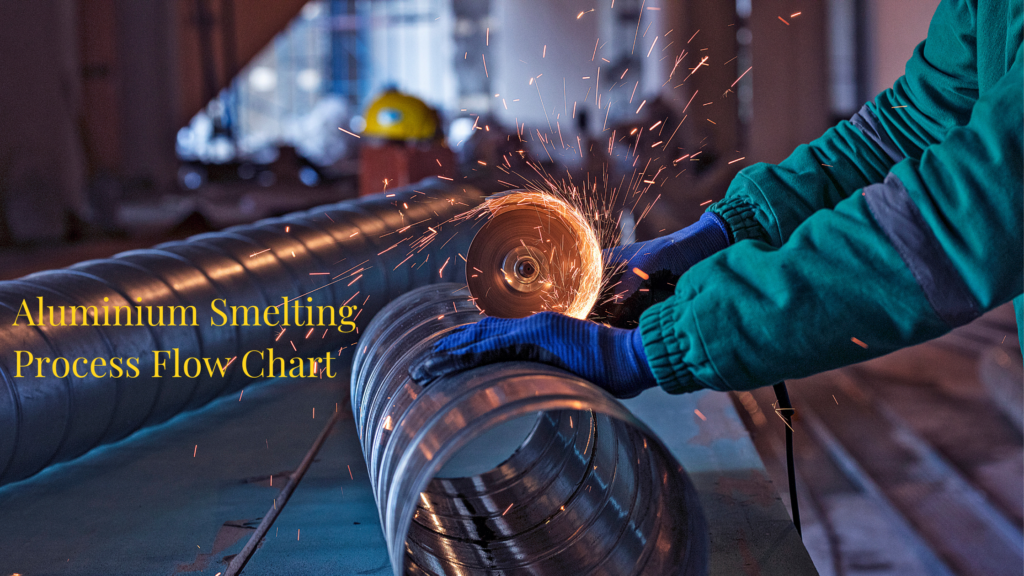Aluminium Smelting Process Flow Chart
Aluminium in the form of bauxite ore is the third most abundant element found on earth after oxygen and silicon. Alumina or aluminium oxide is extracted from bauxite ore by means of the Bayer process. Aluminium smelting is the process by which an aluminium company extracts aluminium from its oxide, Alumina. It is the second most important metallurgical industry in India next only to steel. Aluminium has a wide range of uses thanks to its properties like lightness, corrosion resistance, heat conduction and strength when used as an alloy. It has gained popularity as a substitute for steel, copper, zinc and lead in various industries.
The Hall- Héroult process
The Hall- Héroult process is the main method of smelting aluminium used today. Aluminium is a power intensive industry and uses an electrolytic process. A smelter needs huge amounts of electric power. Almost one third cost of producing primary aluminium comes from electric power. In Spite of all the efforts to reduce the amount of electricity used; there are currently no viable alternatives to the Hall–Héroult process yet.
The bright side however is that recycled Aluminium requires only 5 percent of the energy required to make new Aluminium. Hence blending recycled metal with new metal allows energy savings and efficiency. There is no difference in quality when it comes to primary metal and recycled metal.
Let us look at the steps involved in the Hall- Héroult smelting process.
Adding alumina into the cryolite baths with cathode potlines
The smelting process starts with dissolving the alumina in a molten cryolite bath inside carbon-lined cells, or pots. A pot is a large rectangular cell, lined with carbon blocks and insulating bricks. This carbon lining forms the cathode. A potline is a long collection of buildings, which contain a series of pots, or large electrolytic cells, in which aluminium is made. Cryolite however is not used up in the process.
Introduction of Carbon anodes
Anodes are used to conduct electricity into the smelting cells/pots in the pot room. Anodes are
consumed and replaced in large volumes in the smelting process. Aluminum smelters use carbon anodes in their electrolysis cells as carbon is a good electrical conductor. It can also withstand the action of the corrosive fluoride-containing molten electrolyte at about 960◦C.
In electrolytic aluminium production the consumption of carbon as anode is quite high. It is second only to alumina in quantity. 415 KG of carbon is used for each metric ton of aluminium metal production. Carbon quality should be superior because poor quality carbon can have a bad impact on the pot operation. Anodes are made of carbon with least impurity.
The electrolysis process
In the electrolytic reduction process of smelting, the next step is where Carbon anodes are inserted in the top of the bath and an electric current passes through the anodes. The oxygen atoms separate from the alumina and combine with the carbon anode, leaving the remaining molten aluminum at the bottom of the pot.
Moving molten aluminium
At regular intervals, the molten aluminium is tapped from the bottom of the pots and transported to the holding furnaces.
Casting of aluminum into final products
The molten aluminium is then mixed with other metals in the molten furnace. The alloys thus formed have specific properties to meet specific uses. The casting happens at a temperature of just over 700°C to form ingots, billets or bars. Aluminium fabrication includes forging, casting, rolling, drawing or extruding depending upon the finished product required.
Image courtesy: https://aluminium-guide.com/en/proizvodstvo-pervichnogo-alyuminiya/boksit-alyuminiy/
Aluminium extrusion manufacturers like KMC aluminium who are one of the top Aluminium fabricators in Chennai use high quality aluminium billets from Vedanta to ensure reliability of their extruded products. To know more about one of the best aluminium company in Chennai that can cater to a wide variety of aluminium extruded products log on to https://kmcaluminium.com/
Header image courtesy: freepik



Recent Comments